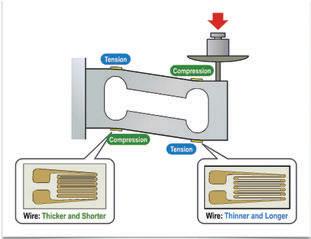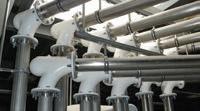TECH PERSPECTIVE JOYCE FASSL | EDITOR IN CHIEF
Advanced Weigh Cell Technology Boosts Efficiency in Packaging Applications Compared to conventional weighing methods, electromagnetic force restoration-based solutions help ensure mission-critical quality control and faster throughput while providing space-saving efficiencies.
R
ECENT TECHNOLOGICAL ADVANCEMENTS have made in-motion weighing operations more precise and profitable for food packaging operations. Typically, checkweighers used for food packaging prevent both underfilling and overfilling of products, resulting in brand protection and cost reduction due to less product giveaway, which is eliminated by a checkweigher’s filler feedback technolJim Renehan, senior ogy. This usually results in a machine’s marketing manager for return on investment (ROI) of well Wipotec-OCS. under a year. The latest checkweighers incorporate weigh cells featuring electromagnetic force restoration (EMFR), according to Jim Renehan, senior marketing manager for Wipotec-OCS, a manufacturer and supplier of in-motion product weighing, X-ray scanning, product inspection, parcel dimensioning, package marking, and serialization and aggregation equipment. Wipotec-OCS’s weighing, inspection, and track-and-trace solutions serve a broad array of industries, including food. EMFR technology has proven effective in tough in-motion weighing applications, according to Wipotec-OCS. It eliminates the reliance on bending metal as a primary means of gathering weight data. The optical and electronic methodology approach employed in EMFR weigh cells results in faster settling times and captures more weigh samples as products move over the weigh cells. These checkweighers can deliver more accurate, repeatable weighing results at faster production line speeds compared to conventional strain gauge-based checkweighers. 54
PROFOOD WORLD
0421_TechPerspective.indd 54
In addition, active vibration compensation (AVC) is incorporated into some EMFR weigh cells to electronically reduce or eliminate the effect that low-frequency vibrations may have on the weighing results obtained by other checkweighers. These environmental vibrations are common in production facilities and warehouse distribution centers, typically with conveyors, mechanical sorters, forklift trucks, and other machinery. PFW: Please explain how EMFR technology works. Renehan: EMFR systems can be compared to a simple beam balance—though the intricacies are anything but. Incoming weight on the load plate causes the lever arm to leave its nominal resting position. A position detector recognizes this slight position change and forces a coil on the other side of the lever arm to move out of the magnetic field. When this occurs, a photoelectrical beam recognizes any minute deviations in the lever arm position and immediately sends its findings through a measurement resistor, transforming this data into a digital signal via an analog-to-digital (A/D) converter. The resulting digital weight value is determined by an advanced digital signal processor at exceptionally fast speeds with an internal sampling rate of 1 ms, or 1,000 weight values per second. The weigh cell’s digital signal processor output is sent to the interface connection on the checkweigher or another third-party OEM device or machine. With their quick sampling rates, EMFR-based weigh cells enable extremely accurate weighing results that provide space and cost savings when integrated into existing systems. They also possess high throughput rates, suitable for high-speed
| April 2021 | www.profoodworld.com
3/31/21 8:15 AM






